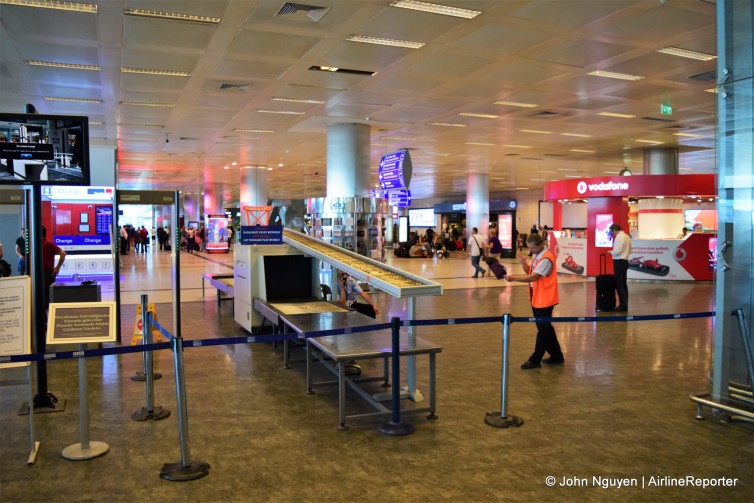
First security checkpoint at the entrance to Istanbul-Ataturk’s International Terminal, taken in April 2015.
This post was updated June 30, 2016 at 8:39am PT
On June 28, explosions and gunfire were reported outside the terminal building at Istanbul Ataturk Airport (IST). We have ended our live updates, but will continue to add new relevant information as it comes through. Our thoughts are with all those affected, as well as their families and loved ones.
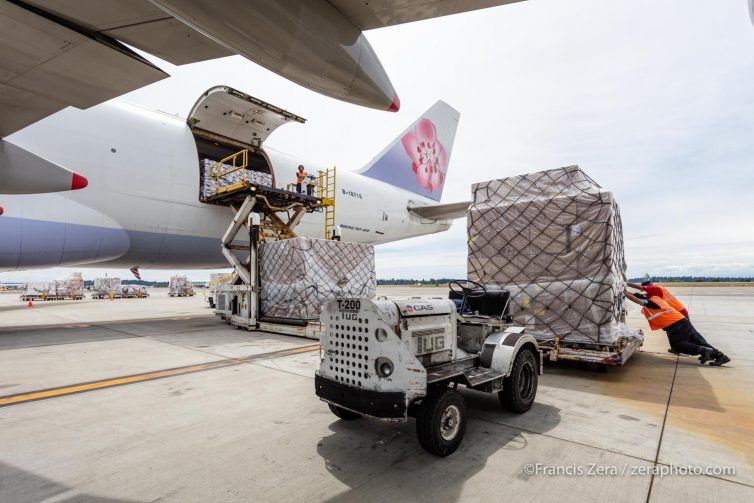
Sea-Tac Airport cargo workers push a pallet of freight onto the loading ramp of an China Airlines Cargo 747-400F
In what has become an annual early-summer ritual at Seattle-Tacoma International Airport, air cargo operators serving Asian ports have increased operations in Seattle for the duration of the roughly two-month long Washington state cherry harvest.
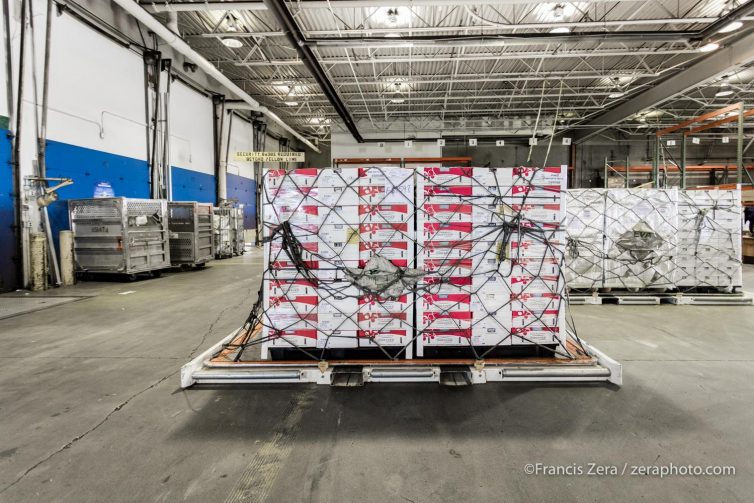
Pallets of cherries destined for Asian markets await shipment at a Port of Seattle warehouse
Carriers making stops in Seattle to pick up pallets of Washington cherries include EVA Air Cargo, NCA, China Airlines Cargo, and Singapore Airlines Cargo. Freighter loads vary, but seldom are the large jets filled solely with cherries; mixed loads are far more common, especially as routes can include stops in one or more U.S. cities before crossing the Pacific.
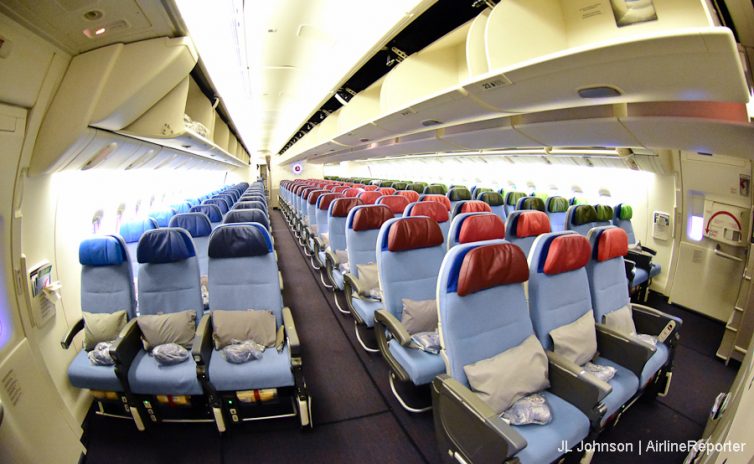
Turkish Airlines economy cabin in a 777-300ER
Just recently I wrote about my business class experience from Chicago to Istanbul. After just two full days on the ground in beautiful and historic Istanbul, it was time to head home. I was still beaming from the “wow factor” I had on the nine-hour flight in, and had high hopes that I might secure a battlefield upgrade for a second time. Sadly, fate was not in my favor and I would be taking the eleven-hour transatlantic trek in the second-to-last row of an almost full 777-300ER. Bad news for me, good news for our editors, and you, our loyal readers. You want more economy class reviews? You got it!
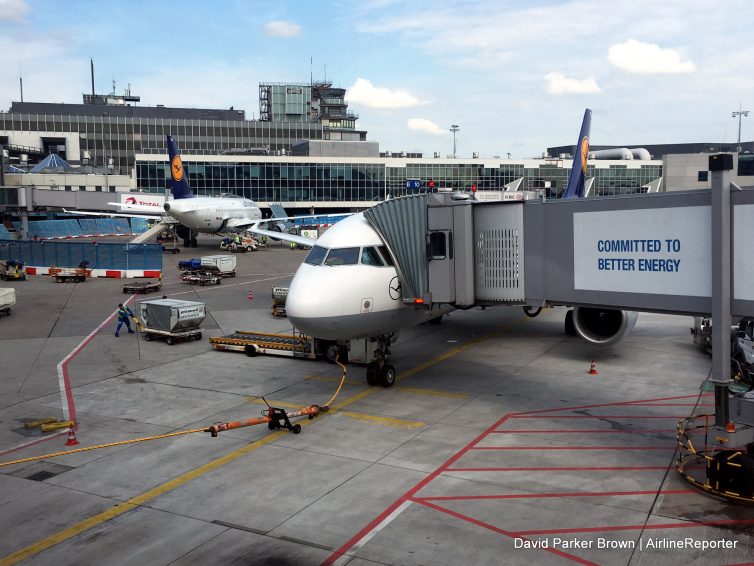
My Lufthansa flight from Frankfurt to Hamburg
I am one lucky guy. I have never had a bag lost by an airline before. Well, before my recent trip to Hamburg, Germany for Airbus Innovations Days. “Um, you are going to tell us a story about your bag David?” Heck yes; stick with me here.
I try not to check my bag. Ever. I have it down to a science how to pack my little rollaboard, get it up in the bin, and call it good. So why did I give in? A few reasons. First off, it was free. Secondly, I had a 55-minute layover in Frankfurt and knew I was going from one side of the airport to the other. Rolly McRollerson was going to slow me down. I figured “why not?” Yeah, my bad.
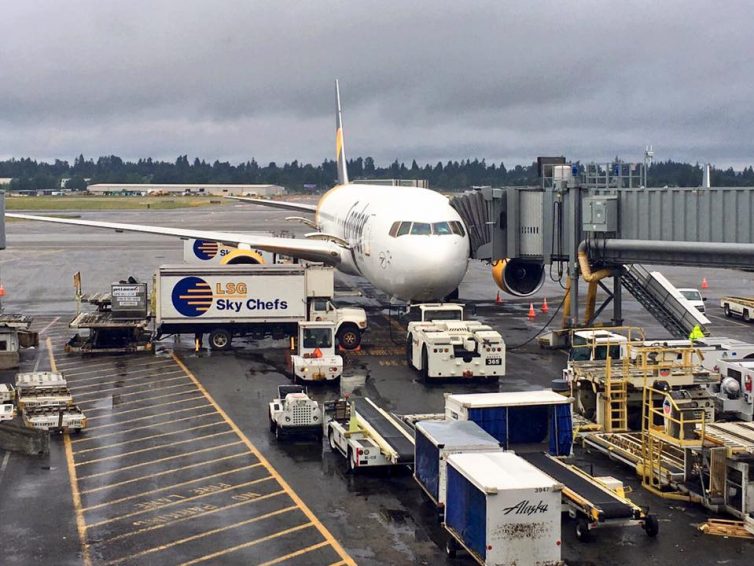
My Condor Boeing 767 in Seattle – Photo: David Parker Brown | AirlineReporter
I remember clearly handing my bag to the ticket agent in Seattle, her placing a pink “priority” tag on him, and off my bag went. And then yadda yadda yadda, I landed in Frankfurt. I hauled across the airport thinking I made the right call checking my bag, and got to my gate to see my flight was 30 minutes delayed. Heh. I was already on a tight schedule. I needed to get to Hamburg, to the hotel, and then to a dinner hosted by Airbus. I didn’t want to be rude to my hosts.
Then, I rode on my A320 and after I was sitting at the carousel in Hamburg waiting for my bag to arrive. Round and round bags go, mine was surely a no-show (yes, I am proud of myself for that rhyme). Now what? Seriously. I write about airlines and I wasn’t even sure what I was supposed to do next. Isn’t there a counter or something for me to go to? Surely there had to be — but would they speak English?
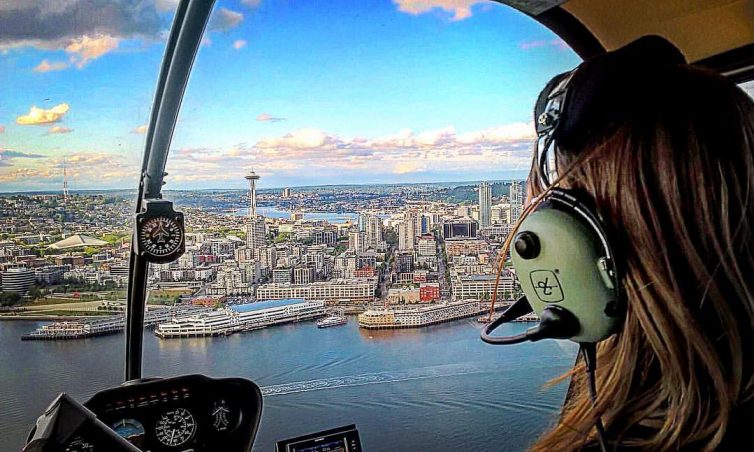
I am flying to downtown Seattle in an R44 – Photo: Kassy Coan
A few years ago, during my transition between software engineering at Google and program management at Microsoft, I took an intro flight in a Robinson 22 helicopter, simply because there was a good deal going, and it sounded like an adventure. I instantly fell in love with the challenge of flying, was mesmerized by the aerodynamics of it all, and was enthralled by the thought of how to improve the user experience of the pilot and optimize the process of flight.
Here I am, many years later, thinking that was the most expensive $70 Groupon I’ve ever come across! However, I’m now an FAA-rated private helicopter pilot, with 150+ total flight hours between the S300, R22, and R44, and have started working on my fixed wing add-on.
I’m often asked if I’ll ever take up piloting as a career. When I say this isn’t likely, but I plan to invest in it further as a hobby, the looks I get vary from ’œwhy are you wasting your time’ to ’œhow is it worth it financially?’ The same goes for anyone looking at my resume (or that of other aviators); those who haven’t experienced aviation training don’t immediately see how the skills it takes to fly an aircraft apply to improving various aspects of life and other non-aviation-related career skills.
Here are a few of the skills I gained while getting my private pilot license, which help me every day in my personal and professional life:






